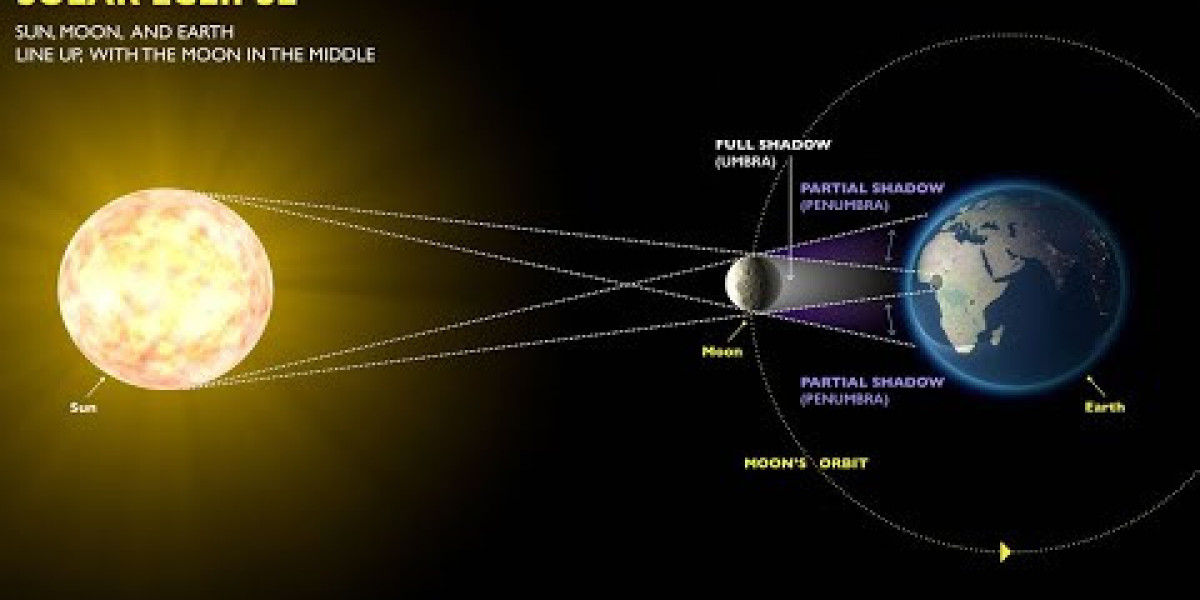A celestial spectacle of grandeur and wonder is approaching—a total solar eclipse. As the moon gracefully dances between the Earth and the sun, it casts a shadow upon our planet, enveloping regions in darkness for a brief yet awe-inspiring moment. Whether you’re an avid astronomer or simply someone curious about the cosmos, understanding the intricacies of a total solar eclipse can enhance your appreciation for this rare event. In this article, we delve into the phenomenon, its significance, and what you need to know to witness it safely and with full appreciation.
Understanding the Phenomenon
A total solar eclipse occurs when the moon positions itself precisely between the sun and the Earth, casting its shadow, known as the umbra, onto the Earth's surface. This alignment results in the moon fully blocking the sun's bright disk, causing daylight to turn into an eerie twilight. During totality, the sun's corona—the outermost layer of its atmosphere—becomes visible, appearing as a shimmering halo around the darkened moon.
Total solar eclipses are rare and occur only when certain conditions are met. Firstly, the moon must be in its new moon phase, where it aligns perfectly with the sun and Earth. Secondly, the Earth, moon, and sun must be in near-perfect alignment along the same plane, allowing the moon's shadow to fall on the Earth's surface. Lastly, the apparent size of the moon must be large enough to completely cover the sun, which happens due to the moon's elliptical orbit around Earth.
Significance and Cultural Impact
Throughout history, total solar eclipses have captured the imagination of civilizations worldwide, often being interpreted as omens or divine messages. Ancient cultures, such as the Babylonians, Greeks, and Mayans, developed elaborate mythologies and rituals around these celestial events. In modern times, eclipses continue to evoke a sense of wonder and curiosity, serving as a reminder of humanity's place in the vastness of the cosmos.
Scientifically, total solar eclipses provide valuable opportunities for researchers to study the sun's corona and outer atmosphere. During totality, scientists can observe phenomena such as solar flares, prominences, and the sun's magnetic field with unprecedented clarity. These observations contribute to our understanding of solar physics and help unravel mysteries surrounding the sun's behavior and its impact on space weather.
Planning Your Eclipse Experience
If you're eager to witness a total solar eclipse, proper planning is essential to ensure a safe and enjoyable experience. Here are some tips to help you prepare:
Research the Eclipse Path: Total solar eclipses are visible only along a narrow path on the Earth's surface, known as the path of totality. Research the trajectory of the eclipse and choose a viewing location within this path for the best experience. Websites and apps dedicated to eclipses provide detailed maps and information to help you plan your trip.
Check Weather Conditions: Weather can significantly impact your eclipse viewing experience. Monitor weather forecasts for your chosen viewing location and have a backup plan in case of inclement weather. Clear skies are essential for witnessing the full spectacle of a total solar eclipse.
Protect Your Eyes: Never look directly at the sun without proper eye protection, even during an eclipse. Use certified solar viewing glasses or handheld solar viewers to safely observe the sun's phases before and after totality. During totality, when the sun is completely obscured by the moon, it is safe to view the eclipse with the naked eye.
Bring Essential Supplies: Depending on your chosen viewing location, amenities may be limited. Bring essentials such as water, food, sunscreen, and portable seating to ensure your comfort during the eclipse. Additionally, consider bringing binoculars or a telescope with a solar filter to enhance your viewing experience.
Embrace the Experience: A total solar eclipse is a rare and awe-inspiring event. Take the time to soak in the atmosphere, marvel at the celestial ballet unfolding before your eyes, and share the experience with fellow eclipse enthusiasts. Capture memories through photographs or sketches, but remember to also immerse yourself fully in the moment.
Conclusion
A total solar eclipse is a celestial phenomenon that transcends time and culture, captivating humanity for millennia. As the moon's shadow traverses the Earth, it reminds us of the beauty and wonder of the cosmos and our place within it. By understanding the science behind eclipses and preparing for the experience, you can fully appreciate the magic of this rare event. So mark your calendars, gather your eclipse viewing gear, and get ready to witness the splendor of a total solar eclipse—a moment of cosmic harmony that will leave a lasting impression on all who behold it.








